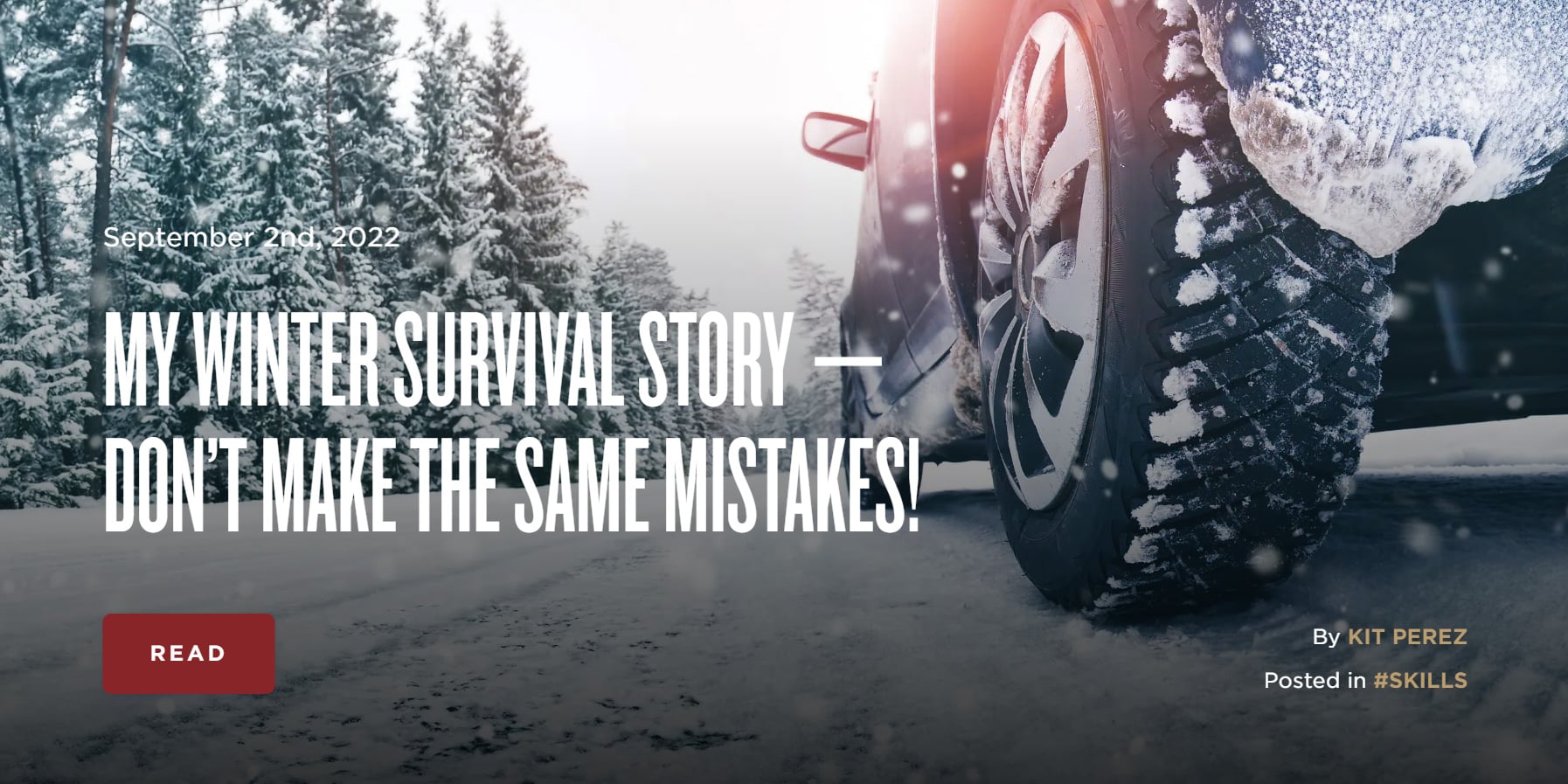Hello all, here is today's article posted on TheArmoryLife.com. It is titled “My Winter Survival Story — Don’t Make The Same Mistakes!” and can be found at https://www.thearmorylife.com/my-winter-survival-story/.



While winter severity varies across the country anyone living in the northern-tier states need to take extra precautions & preparations, especially when traveling our "longer" distances from point A to B.
One key factor is having "real" & quality snow-tires. So-call "all-season" tires just don't cut it when the going gets tough.
I have my "snows" (Bridgestone Blizzaks w/no studs) on separate rims (all four) so I watch how the snowline starts coming down the mountains, the temps as they drop to 32 all day, and weather reports for any snow that's supposed to stick in the valley bottom if I'm not traveling out of my area and going over a pass(s).Come winter time I always put on snow tires. In truck beds I put a sheet of plywood then lay a layer of sandbags down and cover with another sheet of plywood. This allows use of the bed like normal but adds hundreds of pounds over the rear axle.
Hello all, here is today's article posted on TheArmoryLife.com. It is titled “My Winter Survival Story — Don’t Make The Same Mistakes!” and can be found at https://www.thearmorylife.com/my-winter-survival-story/.

Being also from the midwest I can tell you our winters are very cold and can yield a lot of snowfall, but nothing like what you see "Up nort". In the mountains a truck is king. Roads that rarely see a plow abound. And snowfall can be staggering. In urban and semi-urban areas in the midwest you are often better served by compact, front wheel drive vehicles. I once had a beat to hell Dodge Omni with a 4 cylinder and front wheel drive. I passed many trucks, including 4 wheel drives, in ditches and stuck on the side of roads with that little car. It was like a tractor. It never, ever left me stranded anywhere.Thank you Mike!
This is timely information. Thanks to all of you for sharing your suggestions and experiences. This winter will be the first real winter I've had to live through. I've been a California boy for so long I need all the help I can get to ready Mrs. BassCliff and I for winter here in the upper Midwest, near Milwaukee. I have cold weather motorcycle riding gear to keep me warm but there are many other things on the list I'll need to prepare, like hand warmer packets. Good stuff Maynard!
Thank you for your indulgence,
BassCliff
